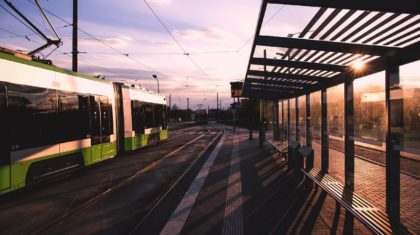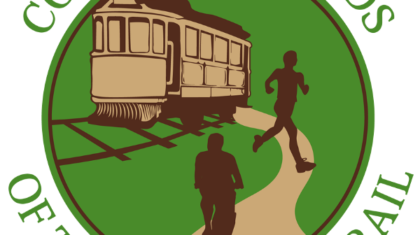
Rethinking Streets
by Lisa Nisenson and Kate Whitfield
This post is adapted from our original article for the Ontario Professional Planners Institute’s Ontario Planning Journal — “Integrating Resilience Within Planning”:
Technology is already changing mobility in our communities. Emerging technology, especially autonomous vehicles, is expected to radically change systems, vehicles, employment, and investment decisions. Like any change, there will be benefits and downsides. This article looks at emerging trends, the challenges and opportunities that come with new technology, and four tried and true measures that deliver community benefits and resiliency.
Emerging Trends
Technology disruption has accelerated competition for use of public rights-of-way. Bike share programs are growing, including new dockless models that allow users to park anywhere, not just designated stations. This has increased the pressure for bicycle racks and other places to secure bikes.
https://blog.altago.com/the-dockless-bike-share-revolution-eb62698d81f8
Sidewalk Demand Management
Even without technology, sidewalks are already enjoying renewed popularity and planning attention. The renaissance in urban living translates into more demand for “outdoor living rooms” and sidewalk cafes. Sidewalks provide green infrastructure, with street tree planters taking on tasks such as urban heat island mitigation and stormwater runoff management. Over the past decade, sidewalk and curb functions such as parking have gone high tech. For planners, bustling sidewalks are good news and a sign of economic vibrancy and healthy, carbon-free travel.
https://blog.altago.com/the-dockless-bike-share-revolution-eb62698d81f8
Autonomous Vehicles
Driverless cars once seemed decades away. However, in the past year, cities across the globe have been launching trials on public and private roads. Automobile companies are competing at a fast pace to gain market share in driverless technology, realizing they must transform or fade away. Despite talking points on liveable cities, discussions tend to move quickly towards vehicles. Experts agree that Vehicle Miles Travelled (VMT) is likely to rise with the low-cost convenience of summoning a door-to-door ride, though they quickly point to reduced carbon with electrified fleets.
The shift to driverless also means massive upgrades will be needed in digital infrastructure, notably broadband for transportation and low-power networks for connected devices (or the Internet of Things).
https://blog.altago.com/the-dockless-bike-share-revolution-eb62698d81f8
Ridesharing
The more immediate technology disruption is the explosive growth of ride sourcing through companies like Uber and Lyft. While a boom for people who don’t own cars, cities are struggling to address congestion in the streets and at curbsides.

Climate Change
Cities are taking climate change seriously. With global talks faltering, cities are taking the reins to pledge carbon reduction goals. In doing so, they must rethink the spaces over which they have control, and a large portion of that portfolio is streets and public rights-of-way.

E-commerce and Delivery
The rise of e-commerce is reshaping both real estate and goods movement. Shoppers themselves have been the traditional last-mile delivery, but with on-demand everything, local deliveries are a growing slice of the traffic congestion pie. For example, the technology company, Starship Enterprises, recently launched an autonomous delivery pod to solve the “first-last 50 feet” delivery to a consumer’s doorstep.

Challenges and Opportunities
For urban planning, the most important questions revolve around how all this disruption translates into our daily work. The following examples, presented as challenges and opportunities, suggest ways our daily routines could change.
Challenge: Cities’ traditional revenue sources based on automobile ownership, such as permits and parking fees, are expected to continue to decline, though it’s unclear how to replace that revenue with new mobility options.
Opportunity: With curbside uses on the rise, such as pick-ups and drop-offs for ride sourcing (Uber, Lyft) and e-commerce, cities need to rethink charging for curb access. With traditional mobility options, these charges come in the form of metered parking. With new mobility, there can still be charges, such as small fees for pick up and drop off. Pricing curbs also provide an avenue for incentives, for example a smaller fee for shared rides or pick-up in designated areas less prone to congestion.
Challenge: In popular urban areas, competition for sidewalk space is already high, and growing with new technology. Cities tend to add new uses on an ad hoc basis instead of locating (or reallocating) amenities and facilities in the most advantageous places.
Opportunity: Just as there is Transportation Demand Management (TDM), cities will need to adopt Sidewalk Demand Management techniques. In addition, cities will seek designs for combining multiple uses into kiosks with small footprint. For example, bike amenities, transit ticketing, schedule displays, lockers and other uses together in one structure.
Challenge: A new generation of motorized and non-motorized “rideables” are emerging, challenging which uses can operate where. This includes small scooters, skate boards, and one-wheels.
Opportunity: These new personal transportation devices provide valuable first/last mile access. Cities can experiment with mixed-motorized pathways like the CVLink in California. Solutions may include e-bicycles and even neighborhood electric vehicles for low impact, local transportation.
Challenge: If driverless vehicles offer on-demand, door-to-door service, why would anyone take transit? The answer is that there is not enough street capacity to accommodate individual trips, even with smaller pods and platooning.
Opportunity: The transit system’s value proposition of moving more people in a smaller footprint remains with or without drivers. With driverless, some experts expect transit agencies will focus on high capacity corridors, replacing low-ridership lines to driverless vehicles that feed riders to transit. Having shuttles presents a new and exciting “missing middle” in transit for higher performance with low impact.

Resilient Solutions
With recent hurricanes and their respective recovery efforts, urban planning is getting a lot national and international media coverage. From pieces arguing how Houston’s development may have contributed to devastating flooding to others calling it bad city planning or bad transportation planning, planners, designers, and engineers need to think about how to actively support the creation of resilient and disaster-ready places.
Of course, many of the best resilient solutions do not arise from new technology. Great urban design and multi-modal streets are still the foundation for livable, sustainable places.
Roundabouts
While rarely proposed in terms of resilience, roundabouts pose multiple benefits. Because cars don’t need to accelerate from a complete stop, emissions are lower. The center of roundabouts can hold landscaping and/or stormwater facilities. Power loss from a storm is not a problem for roundabouts. Whereas disabled, signaled intersections require law enforcement to direct cars, roundabouts continue to do their job.

Walking and Biking
Of all transportation options, walking and biking deliver the widest array of benefits including those associated with health, zero emissions, and social interaction. Moreover, a growing number of studies confirm the value of walkable communities. Walking and bicycling are also not prone to cyberattacks or interruptions.
https://blog.altago.com/the-dockless-bike-share-revolution-eb62698d81f8
Urban Trees
Studies confirm the economic value of street trees. Trees are also essential for resilience; they capture rainfall and shade otherwise heated pavement. However, it takes time for tree canopies to develop. Cities cannot wait for perennial heat waves to take action. They must move to identify future hot spots and areas appropriate for planting.

Permeable Pavement and Porous Asphalt Solutions
Incorporating sustainable stormwater management is critical for climate change mitigation and urban resilience. Permeable pavements are porous paving surfaces that help manage stormwater and reduce runoff by trapping and slowly releasing precipitation into the ground instead of allowing it to flow into storm drains. Permeable pavements can also reduce the concentration of some pollutants and cool down the temperature of urban runoff.

Permeable solutions may include pervious concrete, porous asphalt, or permeable interlocking concrete pavers. Learn how Ecoraster, a budget friendly and eco-friendly Low Impact Development (LID) paving, is making an impact in Ontario, Canada.
An alternative asphalt solution: Los Angeles has painted over many of the city’s roads with a reflective white coating called CoolSeal, a gray paint that keeps streets and parking lots 10 degrees cooler than black asphalt.
Today Los Angeles became the first place in California to install a cool pavement treatment on a public street! Ten deg cooler on summer aft pic.twitter.com/UkwgosotyR
— LA Street Services (@BSSLosAngeles) May 20, 2017
Planners’ Roles
Planners need to add a sense of certainty in uncertain times. This means less long-range planning based on current assumptions and more planning for uncertainty. Scenario planning and pilot programs are essential skills to get ahead of change.
As new models for revenue generation and governance emerge, planners need to understand public-private partnerships and shifting value capture.
Finally, no technological benefits will accrue if the public refuses to accept new mobility options such as autonomous transit. Thus, civic engagement, as with any project, remains at the core of building community and enhancing its resilience.


